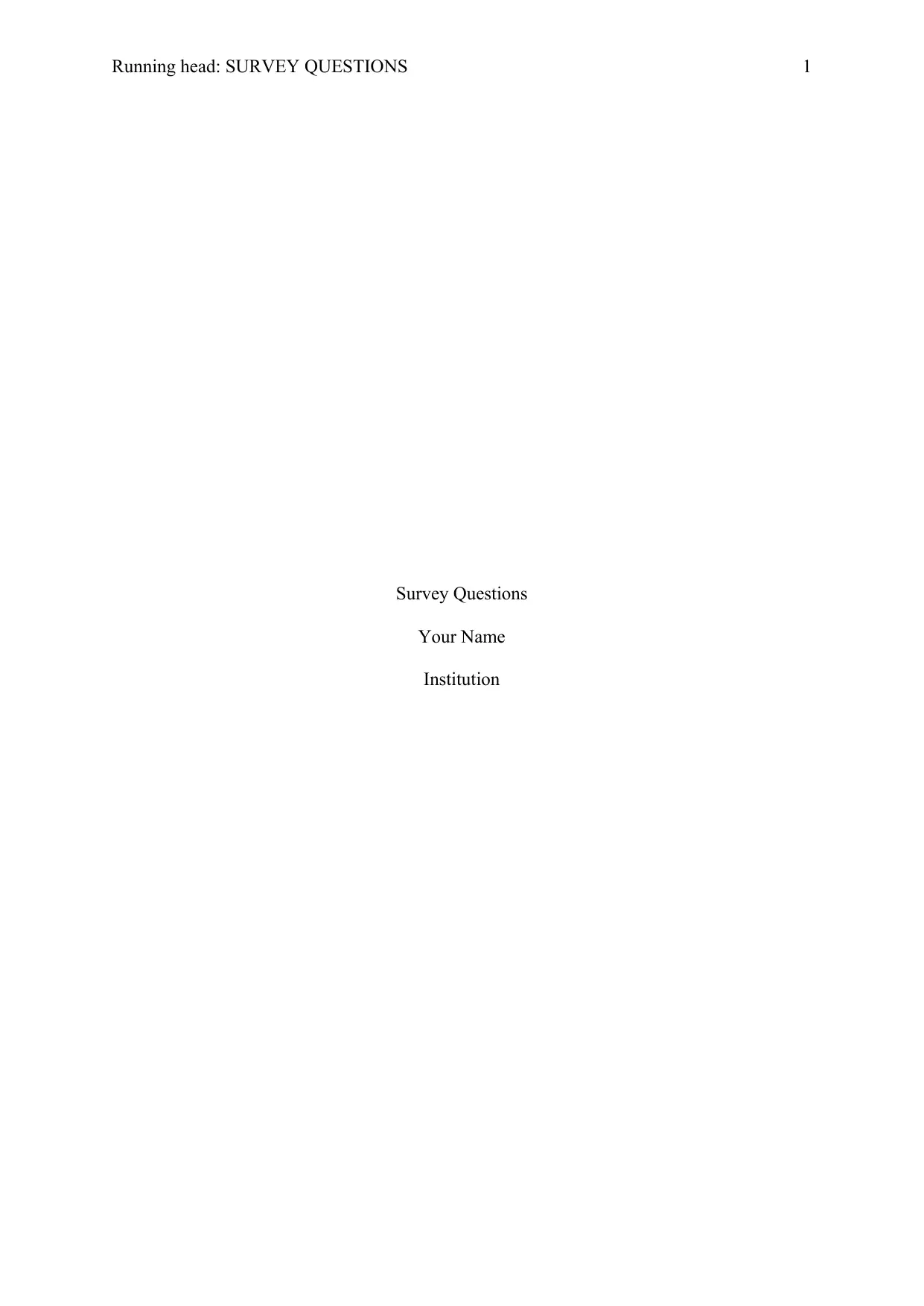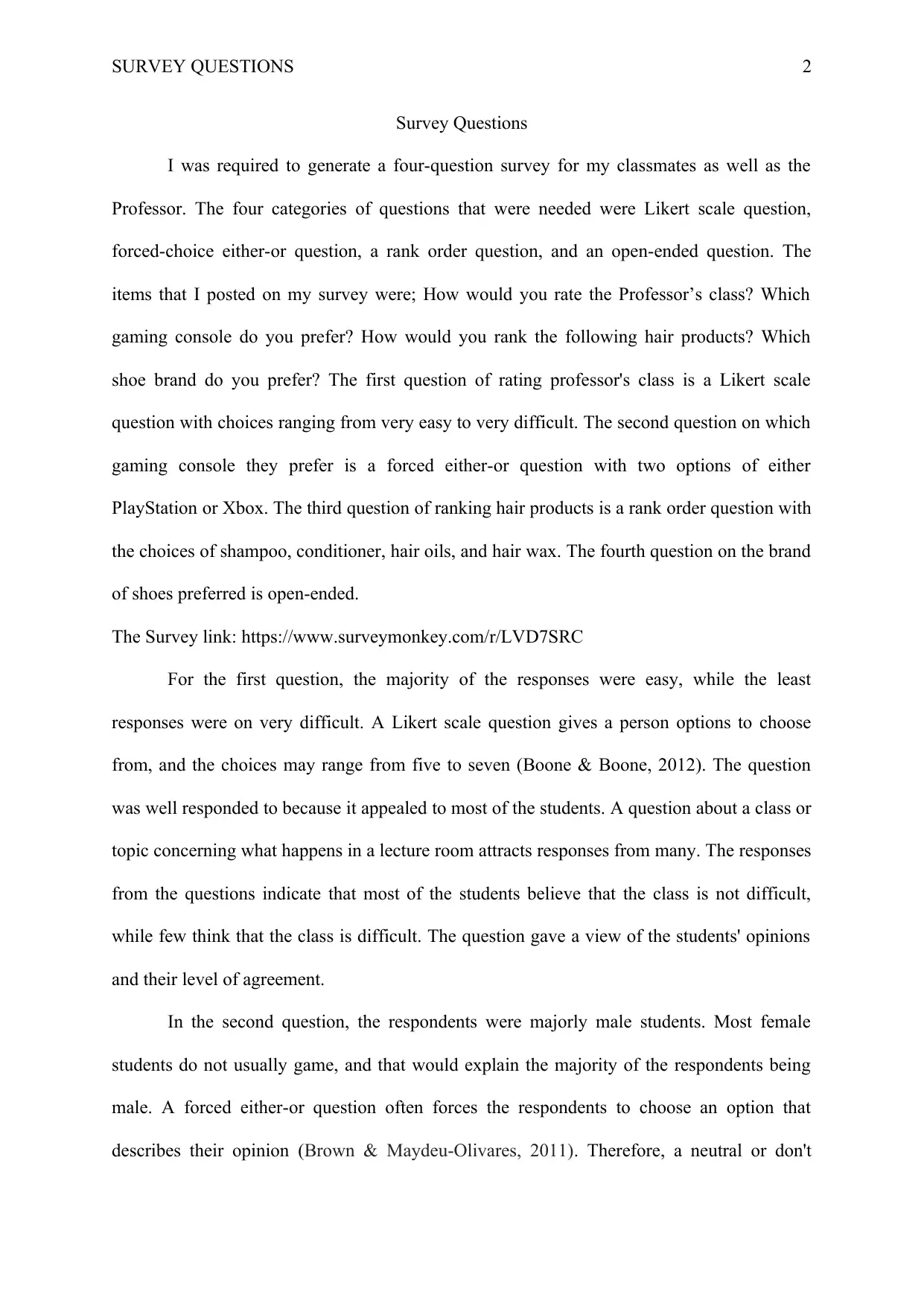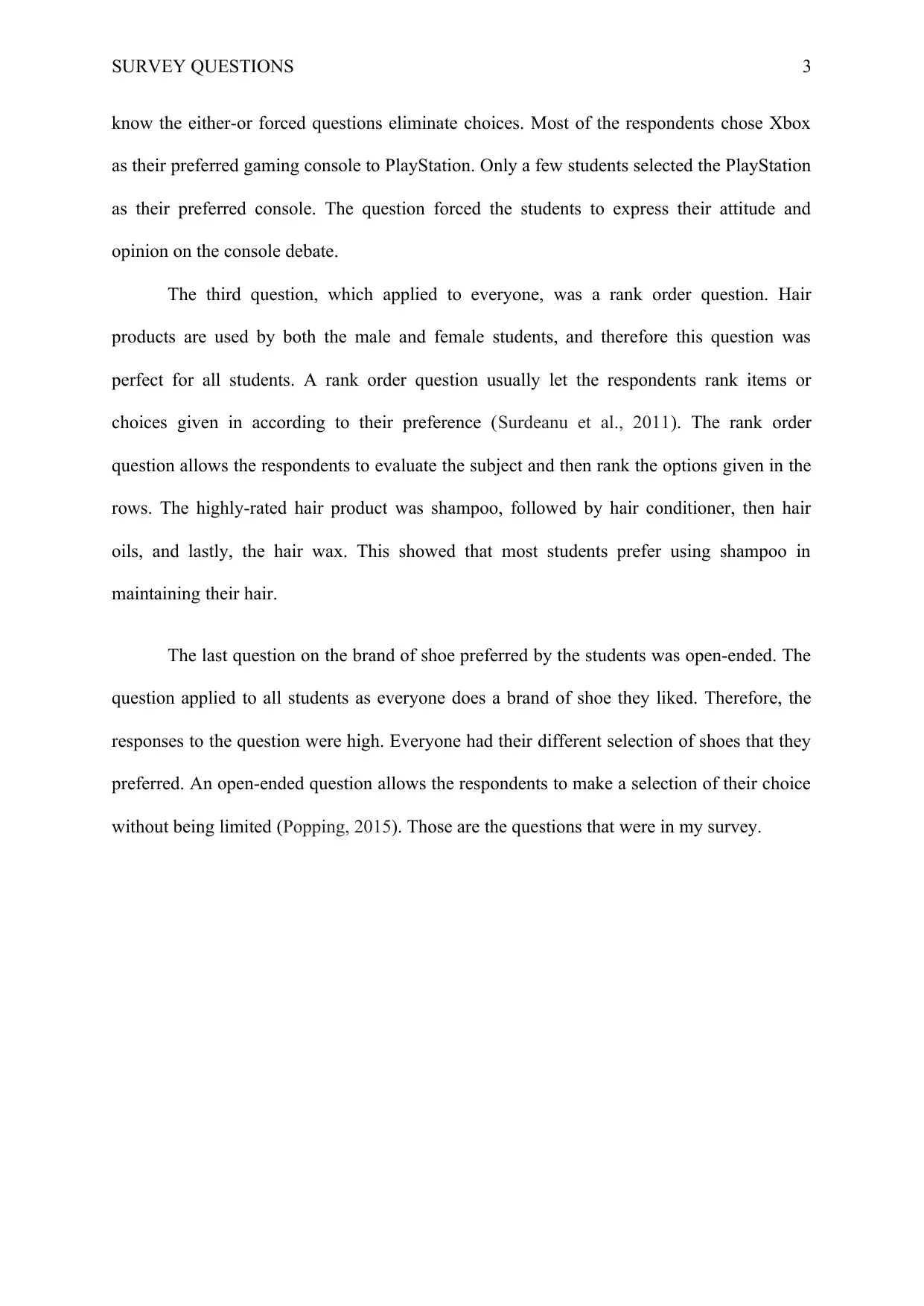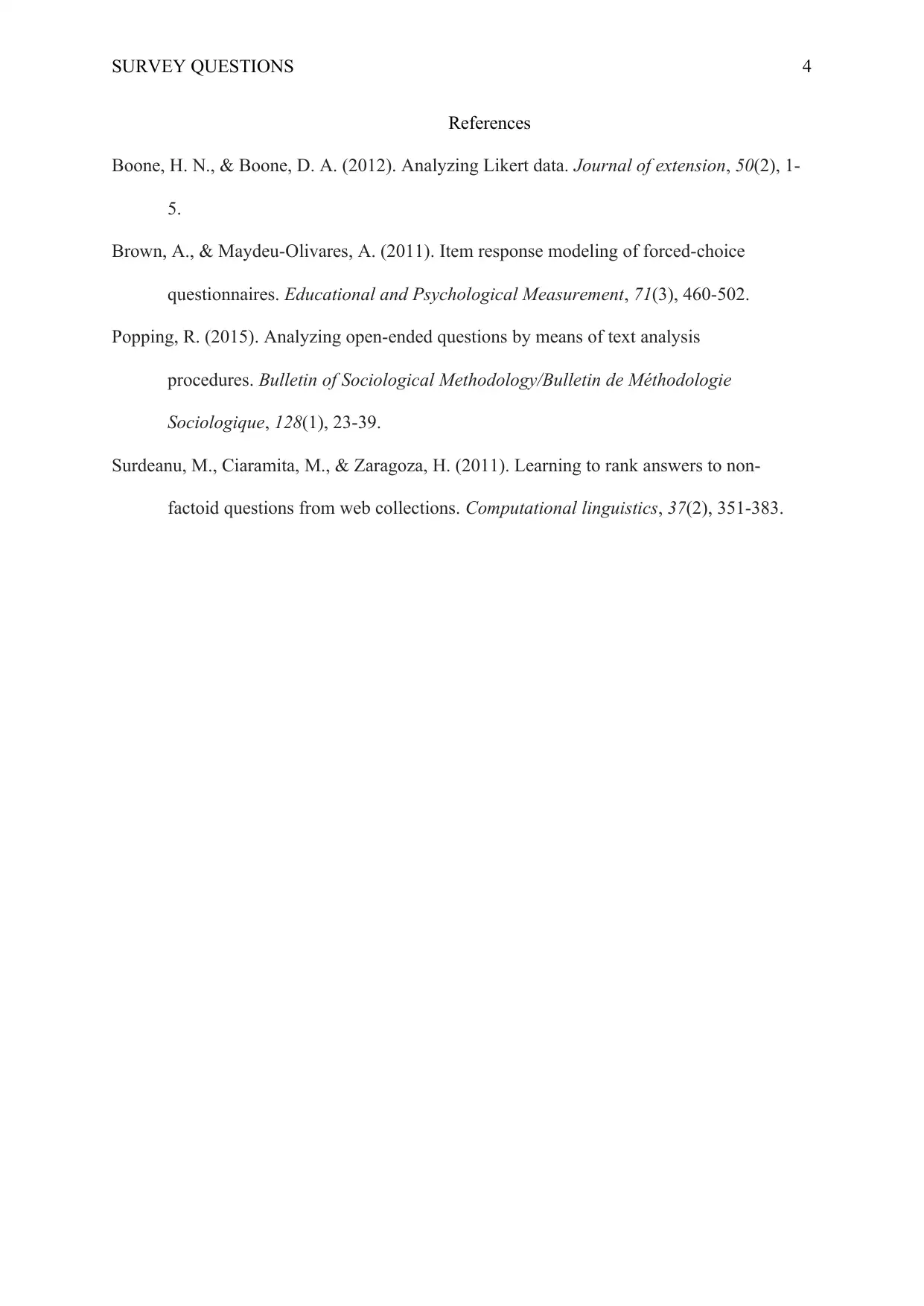Survey Questions Analysis: Likert, Forced-Choice, and Open-Ended
VerifiedAdded on 2022/08/12
|4
|773
|14
Homework Assignment
AI Summary
This assignment presents a student's work on designing and analyzing survey questions. The student created a four-question survey incorporating a Likert scale question (professor's class rating), a forced-choice question (gaming console preference), a rank order question (hair product preference), and an open-ended question (preferred shoe brand). The assignment includes a link to the survey and discusses the responses received, analyzing the effectiveness of each question type. The analysis covers the demographics of the respondents, the strengths of each question type, and the implications of the results. The student references relevant literature on survey design and analysis, providing a comprehensive overview of the survey process and the interpretation of its findings. The assignment highlights the importance of question design in gathering meaningful data and understanding the opinions of the respondents.
1 out of 4





![[object Object]](/_next/static/media/star-bottom.7253800d.svg)